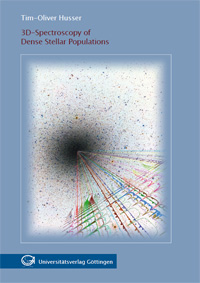Globular clusters are gravitationally bound collections of hundreds of thousands of stars that are almost as old as the Universe itself. Although they have been studied for hundreds of years, their formation and evolution is not yet fully understood. We want to find answers to some of the major questions by investing a large amount of observing time with MUSE, the upcoming 2nd generation instrument for ESO‘s Very Large Telescope. In this thesis I discuss the current state of research on globular clusters as well as the possibilities of this new instrument. Numerical methods for the analysis of MUSE data are presented, including a comprehensive library of synthetic spectra that has been created just for this purpose. The application of these methods to both synthetic and real data is discussed with particular emphasis on a „dry run“ that has been conducted for MUSE. Finally, a potential program for the observation of globular clusters is presented.
Publikationstyp: Monographie
Sparte: Universitätsverlag
Sprache: Englisch





